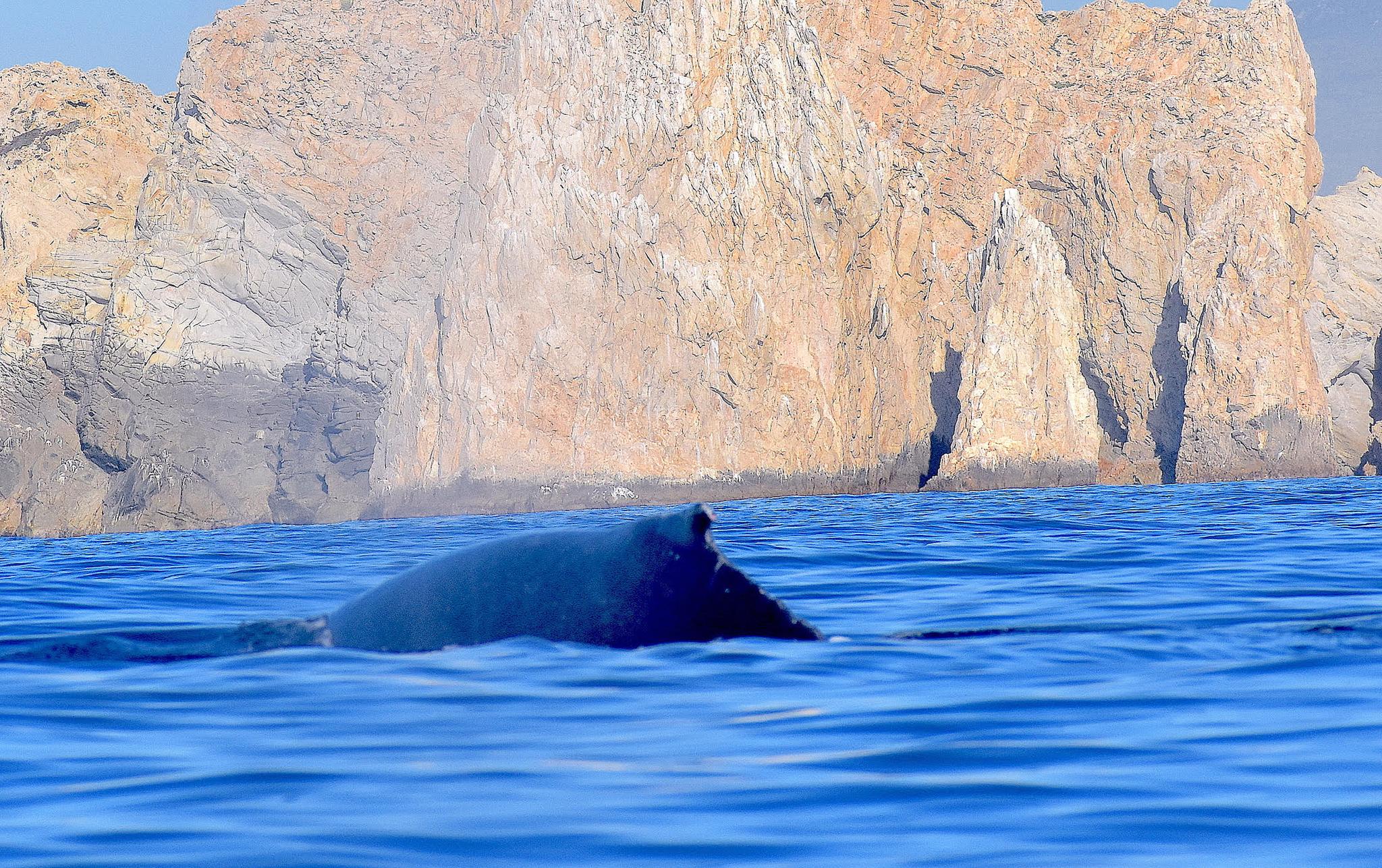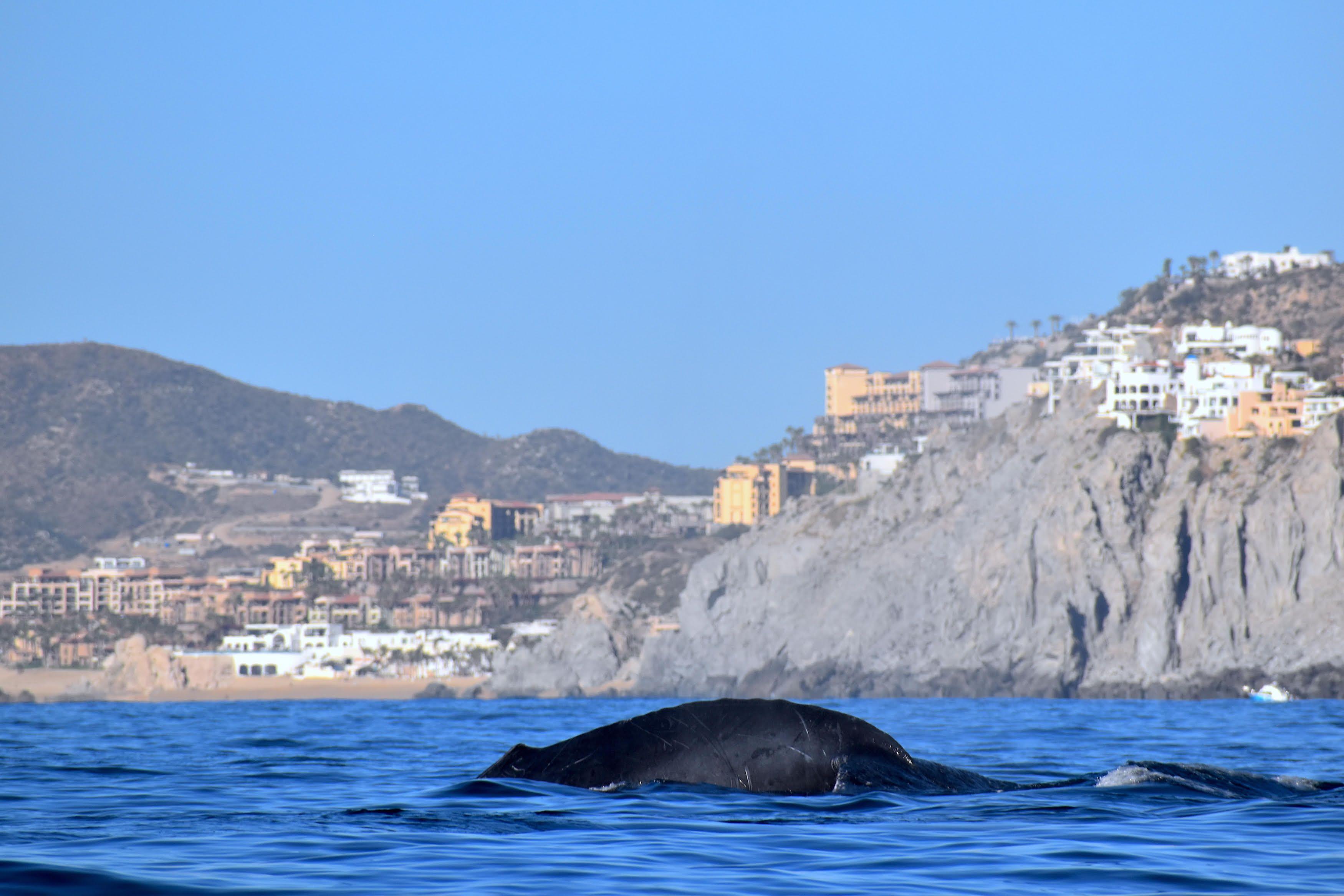The humpback whale migrates to the shores of the Gulf of California to reproduce, mainly, in the municipality of Los Cabos in Baja California Sur. The great tourist interest in the state has caused an influx of boats.
This increase, combined with the lack of regulation of whale watching activity, has led to the species being put at risk due to collisions with boats, harassment and noise pollution, according to Óscar Ortiz, a tour operator dedicated to whale watching for 25 years in Cabo San Lucas.
The problem is obvious to tourists. In January, Rodolfo Asar, an Ecuadorian journalist, took a tour of Cabo San Lucas to observe the humpback whale and was amazed at how the boats were overcrowded and harassed this species.
“It was still quite early but there were already about five boats, two of which were chasing the whales. We were able to differentiate at least two whales, one of them with its calf,” says Asar.
An overtaken activity
“What is the humpback whale, due to the high demand of the tourist destination, which is for multiple marine activities, I think it has actually far exceeded the capacity of the activity,” says Ortiz.
He has practically seen Los Cabos grow as a tourist destination. It was his turn when there was more control over the boats doing the activity and it had a low impact. Today the bay is filled with “million-dollar yachts,” he says, that don't just watch whales. “They do a lot of other activities and I really doubt that they have the permissions,” he says.
“I think that the oversupply of boats and the lack of regulation has caused a very negative effect. Many people don't even know the rules dictated by NOM-131-SEMARNAT-2010,” which regulates whale watching, “and because they earn an extra tip from tourists, they affect the resource and this resource is extremely sensitive,” says Ortiz.
The report The State of Whale Watching in Latin America by researchers Erich Hoyt and Miguel Iñíguez warns that there are a significant number of whale sightings that are not reported or regulated.
“While most high-quality cetacean sighting in Mexico is reported and regulated, there is a significant amount of this activity that is occasional and unreported. The unit price for this type of sighting is lower and tourists often get what they pay for. In general, there are no naturalists or guides on board on board, there are fewer opportunities to follow the rules and regulations that govern the activity and less effort to provide high-quality whale watching trips,” the report notes.
The presence of so many boats causes noise pollution that disturbs species, since the sound of engines is seven times louder than outside the sea. At the same time, with the increase in boats, collisions with whales also increase.
“Imagine 365 days a year for a thousand boats. It's a very disturbing noise and there have also been accidents involving whales being run over by large yachts. This whale season is short, and because there have been changes in whale behavior, which is obviously normal, they seek their well-being like any living being and their protection,” says Ortiz.

On his journey, Asar photographed a whale with scars and another with a mutilated dorsal fin that could be attributed to a collision, however, specialists point out that this cannot be guaranteed because they may be the result of fights with other males.
Limits on activity and absences of authority
The NOM states that the maximum speed allowed within the observation area must be less than 9 kilometers; that vessels cannot be less than 100 meters away; that only four boats can observe the same whale; and that they can spend a maximum of 30 minutes watching the same whale.
Although there are entry and exit regulations, Oscar points out that they are not respected due to the large number of boats and the inability to ensure that they all comply with them.
This was confirmed through the experience of Asar, who points out that there were boats that went in the direction of the whale at a reasonable speed, but there were also those who were chasing it at full speed harassing them as is prohibited in the NOM, since this interferes with the natural behavior of the whales.
“We saw two crazy boats chasing them. It's completely imprudent to get too close because you can not only harm the whale, you or your boat can get hit,” Asar says. “Everything seemed to me to be mismanaged, in other words, unmanaged in reality, pure anarchy.”
Although the Federal Attorney's Office for Environmental Protection (Profepa) is responsible for enforcing the NOM, Semarnat is responsible for regulating sighting by establishing observation areas, restricted areas, the length of the season and providing a badge for vessels to wear during the provision of the service.
However, Óscar points out that this has been partially fulfilled since Semarnat has not delivered the flags that indicate that the boat has the permit. It used to be delivered in December, but this time they haven't had this badge for half the season.
A specific management plan is required for humpback whales
Currently, the NOM-131-SEMARNAT-2010 regulates the observation of humpback whales, blue whales, fin whales, gray whales and sperm whales, however, it needs to be updated and a specific instrument is required for humpback whales that has a zoning with established speeds, Oscar Ortiz said.
The NOM itself points out that, without adequate regulation of the non-extractive use of the species, negative impacts can be caused on the species or its habitat.
However, even if there were good regulations, someone is required to enforce them. Asar points out that there must be speed monitoring, so a GPS system could be incorporated into the boats and a boat could be placed to monitor the area and deter bad practices.
Although this is on the part of the authorities and tour operators, Óscar Ortiz points out that taking care of whales is a co-responsibility that also falls on those who hire these services, so he recommends as good practices to go to established agencies that have his permission from Semarnat, with a captain with a sea license and a guide on board.



Comentarios (0)